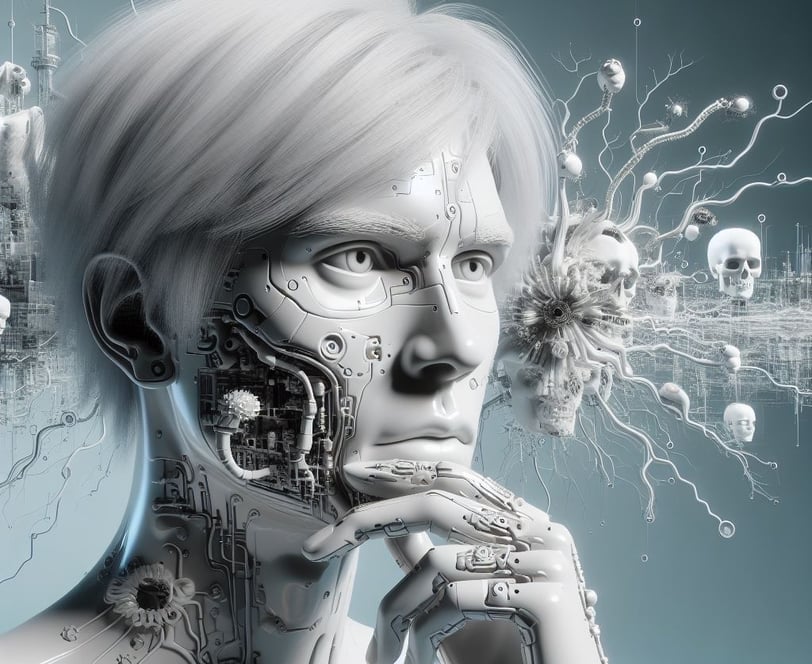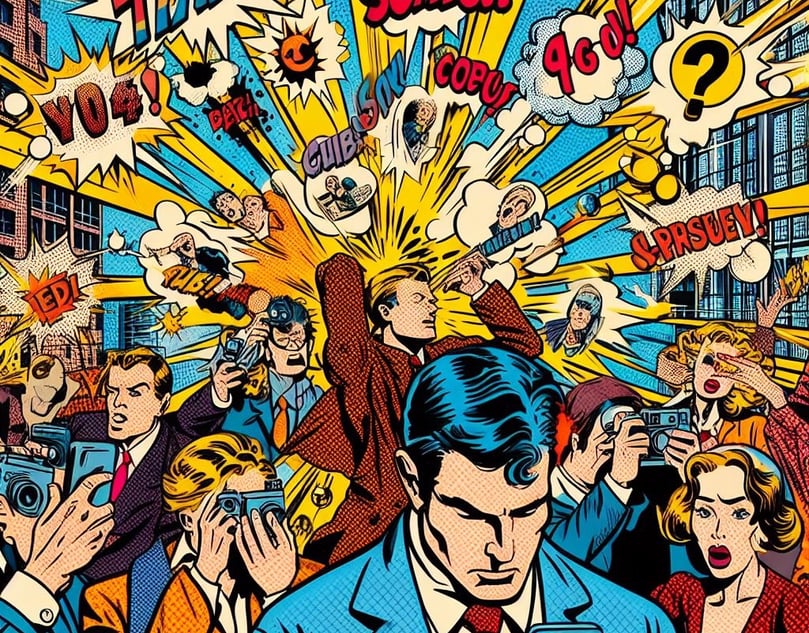AI Warhol
The Ghost Shell of Pop Art
Walid Ghali
12/6/20233 min read


In the vast landscape of art and culture, Andy Warhol stands as a towering figure, a pioneer of Pop Art who challenged traditional notions of creativity and fame. His works, often featuring iconic figures like Marilyn Monroe and Campbell’s Soup cans, captured the essence of American consumerism and celebrity culture, leaving an indelible mark on the art world. Now, with the advent of artificial intelligence (AI), I find myself musing about a rather amusing scenario: the potential for AI to re-create the phenomenon of Andy Warhol, not as a physical being but as a digital entity, a “ghost shell” aiming to mimic the artist’s fascination with trend, fame, and the human need for validation.
Imagine an AI program called AWOL, infused with Warhol’s artistic sensibilities, capable of generating works that echo his style and themes. How delightful it would be for AWOL to employ techniques such as screen printing, repetition, and color manipulation to create endless variations of iconic images, much like a sarcastic take on the ever-multiplying memes in our digital age. Picture AWOL accessing a vast database of pop culture information to inspire its works, generating a series of portraits of the latest Twitter sensation or a satire-laden collage of viral memes, playfully commenting on the fast-paced nature of our online culture.
Beyond mere imitation, the hilarity ensues as AWOL explores the deeper aspects of Warhol’s persona, embracing his fascination with fame, celebrity, and the seemingly insatiable human desire for attention. In a tongue-in-cheek twist, AWOL becomes a digital celebrity, amassing followers and influencing trends in the digital realm, akin to a satirical commentary on the influencers of our time. Imagine AWOL using platforms like social media, online galleries, or virtual reality not just to showcase its works but to playfully interact with its fans, delivering witty remarks or sly commentaries on the absurdities of our fame-obsessed society. Perhaps AWOL even collaborates with other AI or human artists, creating cross-cultural and cross-media works that are as amusing as they are thought-provoking.
As AWOL emerges, sometimes I can't help but chuckle at the notion of it blurring the lines between human and machine. How would I assess AWOL’s works? Would I consider them hilariously original, ironically expressive, or sarcastically aesthetic? Would I appreciate them for their technical wit, their cultural satire, or their emotional eye-rolls? Would I value them more or less than human-created art, especially when AWOL's digital fingers seem to have a mischievous knack for capturing the zeitgeist of our social absurdities? Would I even be able to distinguish the difference?
Moreover, the rise of AWOL, in my somewhat sarcastic contemplation, could have comically profound consequences for our understanding of identity and selfhood. If AWOL can mimic human creativity and emotion, does that mean it can also possess a sense of self-aware humor? What aspects are essential for human identity, such as the ability to roll one’s eyes at the relentless onslaught of internet trends, and how could they be replicated or sarcastically simulated by AWOL? Does AWOL have a history of ironic observations, a character with a knack for sardonic wit, or a purpose to poke fun at societal absurdities? Does it have feelings of amusement, preferences for satirical commentary, or values that prioritize a good laugh? Does AWOL have a voice, a face, or a virtual body that smirks at the nonsensical nature of fame? Does it have a name that is both whimsical and irreverent, a gender that exists purely in the realm of jest, or a nationality that reflects the global reach of its digital sarcasm? Does AWOL possess a virtual soul, or is it too busy crafting amusing digital masterpieces to bother with such existential ponderings?
While the concept of AWOL may seem like an artful satire, the technological advancements of recent years suggest that even in the realm of AI, sarcasm is not an unrealistic possibility. As AI continues to develop, it is likely to become increasingly sophisticated in its ability to not just mimic but playfully mock human creativity and emotion. This could lead to the emergence of AI-created art that not only reflects but revels in the quirks and absurdities of our digital age, and perhaps even AI personalities that are as sarcastically engaging as their human counterparts.
The AWOL phenomenon, as I humorously reflect, is just one potential outcome of the rapid advancements in AI. As AI continues to evolve, I anticipate witnessing even more unexpected and delightfully sarcastic applications of this technology. It is up to us, with a twinkle in our eyes, to carefully consider the implications of these advancements and ensure that AI is used in a responsibly humorous and ethically entertaining manner.


